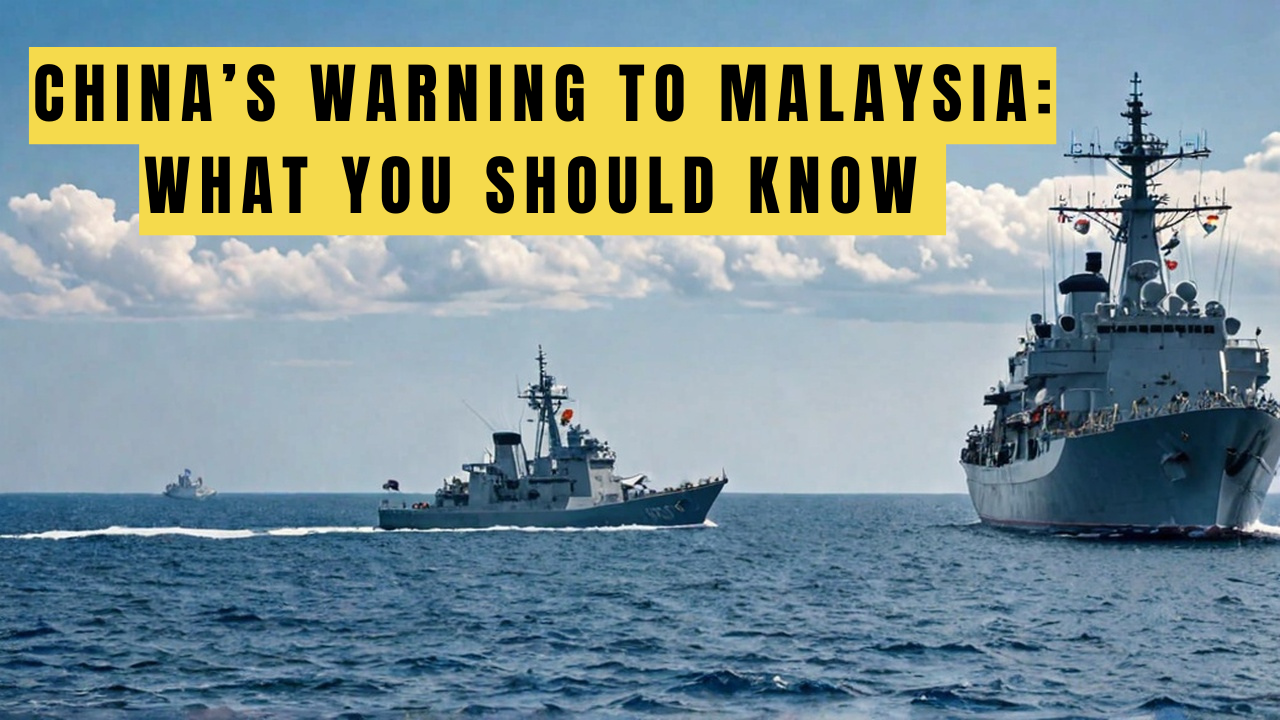
Introduction
China has issued yet another warning to Malaysia over activities in the South China Sea. This isn’t a new development. In fact, China has lodged three protests in as many years against Malaysia’s oil and gas exploration efforts in its own Exclusive Economic Zone (EEZ). Just a few days ago, Chinese coast guard vessels entered Malaysia’s EEZ, marking another critical moment in this geopolitical hotspot.
This isn’t merely a diplomatic spat; it’s a sign of escalating tensions in one of the world’s most strategically important regions. How will this intensifying standoff shape the future of Southeast Asia? Here are the key trends to watch as this geopolitical struggle unfolds.
Current Situation: China’s Assertive Posture
As someone involved in the Code of Conduct talks with China, I’ve seen the rising tension firsthand. China’s recent diplomatic protests highlight an assertive posture, especially over Malaysia’s oil and gas exploration near the Luconia Shoals. In a previous video, I explained how China has responded to Malaysia’s EEZ activities, and you can check that video for more detailed context.
China’s Protests
Over the last few years, China has formally protested Malaysia’s actions multiple times:
- 2019 & 2020: China objected when Petronas deployed the West Capella to conduct oil exploration surveys within Malaysia’s EEZ near the Luconia Shoals. Chinese coast guard vessels shadowed the operations, sparking tensions between the two nations.
- 2021: Chinese air force planes flew over Malaysian airspace near the South China Sea, prompting Malaysia to lodge its own protest with Beijing.
- February 2024: China issued a warning to Malaysia after continued oil and gas exploration activities in the Luconia Shoals, calling on Malaysia to halt operations despite their location within Malaysia’s EEZ, as defined by the United Nations Convention on the Law of the Sea (UNCLOS).
Malaysia isn’t alone. Vietnam and the Philippines have faced similar intrusions and protests from China. In the Philippines’ case, there have been near skirmishes, barely stopping short of outright conflict.
What Does It Mean?
China’s actions aren’t just about asserting territorial claims. These moves signal a broader message: Beijing will not tolerate any challenges to its dominance in the South China Sea, even from countries like Malaysia, with which it has historically enjoyed good bilateral relations.
This sharp distinction between China’s regional dominance and its bilateral relations is clear. Despite cooperative relations in other areas, China is determined to maintain its control over the South China Sea.
Key Trends to Watch
- Intensification of China’s Actions
China will likely increase diplomatic and economic pressure on ASEAN countries, especially those involved in territorial disputes. Expect more warnings, economic leverage, and increased naval presence in contested waters. Malaysia will face tough decisions, having to balance economic dependence on China with the need to assert its sovereignty. - Escalating US-China Rivalry
The South China Sea is a critical arena for the broader US-China rivalry. As China continues its assertive actions, the US is expected to bolster its presence in the region, potentially leading to more skirmishes involving China and ASEAN claimant states. Malaysia, the Philippines, and Vietnam could find themselves caught in the middle of these competing powers. - Greater Chinese Investments with Conditions
As the US and Western nations decouple from China, Chinese exports will increasingly flow into ASEAN markets. This will create competition with local industries, possibly intensifying economic tensions. China is also likely to increase its investments in Southeast Asia through the Belt and Road Initiative, but future investments could come with political strings attached, intertwining economic assistance with geopolitical objectives. - Stagnation in Code of Conduct Negotiations
With China’s aggressive actions targeting key ASEAN claimant states like Malaysia, the Philippines, and Vietnam, progress on the long-awaited South China Sea Code of Conduct could stall. As Malaysia assumes the ASEAN Chair in 2025, it will face an uphill battle in moving negotiations forward amidst these heightened tensions. - Evolution of UNCLOS and International Law
The South China Sea disputes are testing the boundaries of international law. While China rejected the 2016 arbitration ruling, it remains a signatory to UNCLOS. Yet, China seems intent on maintaining its controversial nine-dash line, hoping to force ASEAN states into tacitly accepting its claims. This dynamic will likely continue to push the limits of international norms.
Conclusion: A Region in Flux
China’s warning to Malaysia serves as a wake-up call for the entire Southeast Asian region. The future remains uncertain, as China’s actions force ASEAN nations into difficult positions. Will Southeast Asia unite to counter external pressures, or will the region fracture under growing tensions?
One thing is clear: this situation is far from over.